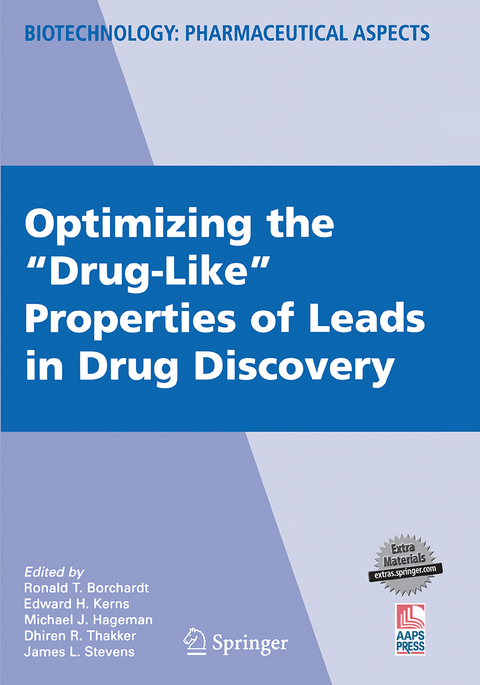
Optimizing the "Drug-Like" Properties of Leads in Drug Discovery
Springer-Verlag New York Inc.
978-1-4939-5047-8 (ISBN)
Strategic Use of Preclinical Pharmacokinetic Studies and In Vitro Models in Optimizing ADME Properties of Lead Compounds.- Role of Mechanistic Transport Studies in Lead Optimization.- Metabolic Activation-Role in Toxicity and Idiosyncratic Reactions.- Case History — Use of ADME Studies for Optimization of Drug Candidates.- Solubility, Solubilization and Dissolution in Drug Delivery During Lead Optimization.- Lipid-based Systems, Drug Exposure and Lead Optimization.- Biopharmaceutics Modeling and the Role of Dose and Formulation on Oral Exposure.- Application of Physicochemical Data to Support Lead Optimization by Discovery Teams.- Computational Models Supporting Lead Optimization in Drug Discovery.- Prodrug Strategies for Improving Drug-Like Properties.- The Application of Multivariate Data Analysis to Compound Property Optimization.- Case History: Toxicology Biomarker Development Using Toxicogenomics.- Predicting Idiosyncratic Drug Reactions.- Elementary Predictive Toxicology for Advanced Applications.- The Application of PK/PD Modeling and Simulations During Lead Optimization.- Early Preclinical Evaluation of Brain Exposure in Support of Hit Identification and Lead Optimization.- Optimizing Biomarker Development for Clinical Studies at the Lead Optimization Stage of Drug Development.- The Relevance of Transporters in Determining Drug Disposition.
| Erscheinungsdatum | 13.11.2016 |
|---|---|
| Reihe/Serie | Biotechnology: Pharmaceutical Aspects ; IV |
| Zusatzinfo | X, 512 p. |
| Verlagsort | New York |
| Sprache | englisch |
| Maße | 178 x 254 mm |
| Themenwelt | Medizin / Pharmazie ► Medizinische Fachgebiete ► Pharmakologie / Pharmakotherapie |
| Medizin / Pharmazie ► Pflege | |
| Medizin / Pharmazie ► Pharmazie | |
| ISBN-10 | 1-4939-5047-9 / 1493950479 |
| ISBN-13 | 978-1-4939-5047-8 / 9781493950478 |
| Zustand | Neuware |
| Informationen gemäß Produktsicherheitsverordnung (GPSR) | |
| Haben Sie eine Frage zum Produkt? |
aus dem Bereich


